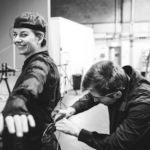
How to Create Engaging Storyboards for Your Next Project?
Creating a compelling storyboard is an essential step in the pre-production process of any visual project, whether it’s a film, commercial, animation, or corporate video. A well-crafted storyboard serves as a blueprint, providing a visual guide that outlines the sequence of events and helps communicate the director’s vision to the entire production team. Here’s a step-by-step guide on how to create engaging storyboards for your next project:
1. Understand the Script
Before you start storyboarding, it’s crucial to thoroughly understand the script. Read it multiple times to grasp the storyline, character arcs, key scenes, and overall tone. Take notes on important visual elements, actions, and transitions. This foundational understanding will inform every aspect of your storyboard.
2. Define the Key Scenes
Identify the key scenes that are pivotal to the story. These are the moments that drive the narrative forward and convey the most important actions and emotions. Focusing on these scenes first will help you structure your storyboard effectively.
3. Sketch the Thumbnails
Start with rough thumbnail sketches of each scene. Thumbnails are small, quick sketches that capture the essence of each shot. Don’t worry about details at this stage; focus on composition, camera angles, and the overall flow of the story. Thumbnails allow you to experiment with different visual approaches before committing to a final version.
4. Add Details and Refinements
Once you have the basic structure in place, refine your sketches. Add more details to the characters, backgrounds, and props. Indicate camera movements, such as pans, tilts, and zooms, as well as transitions between scenes. Use arrows and notes to clarify actions and directions.
5. Incorporate Text Descriptions
Accompany your sketches with brief text descriptions. These should include information about the scene, dialogue snippets, and any specific instructions for the actors or crew. Text descriptions help ensure that everyone involved in the production understands the context and requirements of each shot.
6. Focus on Composition and Framing
Pay attention to composition and framing in your storyboard panels. Use the rule of thirds to create visually appealing shots, and vary your camera angles to maintain viewer interest. Consider close-ups for emotional moments, wide shots for establishing scenes, and medium shots for dialogue exchanges.
7. Use Consistent Style and Formatting
Maintain a consistent style and formatting throughout your storyboard. This includes using the same character designs, proportions, and drawing techniques. Consistency makes the storyboard easier to read and follow, helping the production team visualize the final product accurately.
8. Review and Revise
Review your storyboard with the director, cinematographer, and other key team members. Gather feedback and make necessary revisions. This collaborative process ensures that the storyboard aligns with the overall vision and addresses any potential issues before production begins.
9. Digitize Your Storyboard
Consider digitizing your storyboard using software like Storyboard Pro, Photoshop, or even PowerPoint. Digital storyboards are easier to share, edit, and present. They also allow you to include additional elements like sound effects, music cues, and motion graphics.
10. Prepare for Presentation
Finally, prepare your storyboard for presentation. Organize the panels in sequence and create a clear, coherent narrative flow. Be ready to explain your choices and how they contribute to the overall story. A well-presented storyboard will help get everyone on the same page and excited about the project.
Conclusion
Creating engaging storyboards is a critical skill for any visual storyteller. By following these steps, you can effectively translate your script into a visual format that guides the production process, ensures clear communication, and helps bring your vision to life. With practice and attention to detail, your storyboards will become powerful tools that enhance the creative process and lead to successful projects.








